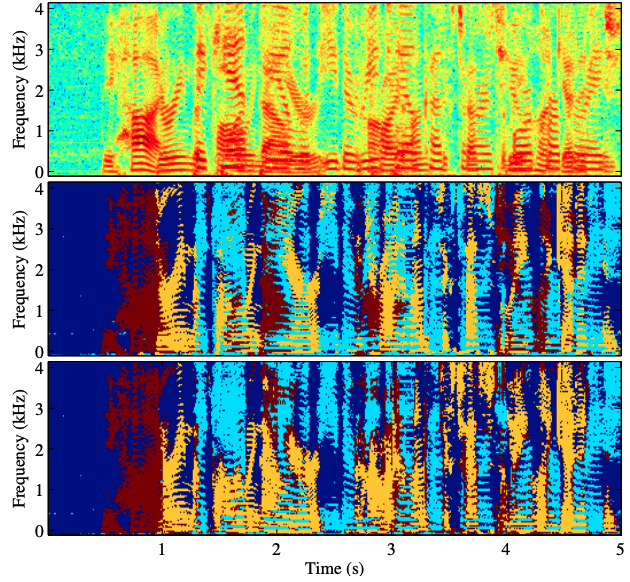Harmonicity Plays a Critical Role in DNN Based Versus in Biologically-Inspired Monaural Speech Segregation Systems
Recent advancements in deep learning have led to drastic improvements in speech segregation models. Despite their success and growing applicability, few efforts have been made to analyze the underlying principles that these networks learn to perform segregation. Here we analyze the role of harmonicity on two state-of-the-art Deep Neural Networks (DNN)-based models- Conv-TasNet and DPT-Net. We evaluate their performance with mixtures of natural speech versus slightly manipulated inharmonic speech, where harmonics are slightly frequency jittered. We find that performance deteriorates significantly if one source is even slightly harmonically jittered, e.g., an imperceptible 3% harmonic jitter degrades performance of Conv-TasNet from 15.4 dB to 0.70 dB. Training the model on inharmonic speech does not remedy this sensitivity, instead resulting in worse performance on natural speech mixtures, making inharmonicity a powerful adversarial factor in DNN models. Furthermore, additional analyses reveal that DNN algorithms deviate markedly from biologically inspired algorithms that rely primarily on timing cues and not harmonicity to segregate speech.
PDF AbstractDatasets
| Task | Dataset | Model | Metric Name | Metric Value | Global Rank | Benchmark |
|---|---|---|---|---|---|---|
| Adversarial Attack | WSJ0-2mix | ConvTasnet and Dual Path Transformers | SDR | 0.70dB | # 1 |




 WSJ0-2mix
WSJ0-2mix
